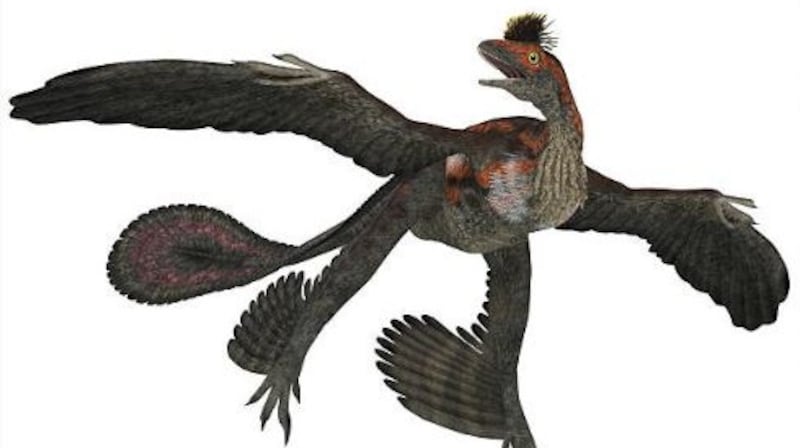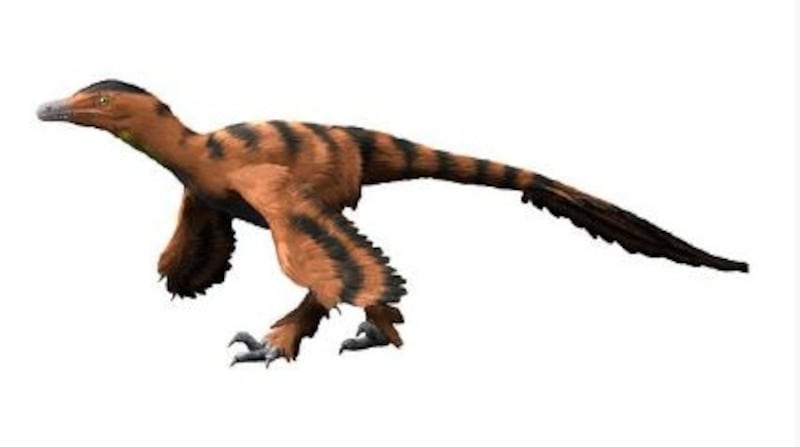UCC palaeontologists have discovered 125 million-year-old dandruff preserved among the plumage of feathered dinosaurs and early birds – offering the first evidence of how dinosaurs shed their skin.
Dr Maria McNamara and her team studied the fossil cells which originated in China, and compared them to dandruff from modern birds using powerful electron microscopes.
“The fossil cells are preserved with incredible detail – right down to the level of nanoscale keratin fibrils. What’s remarkable is that the fossil dandruff is almost identical to that in modern birds; even the spiral twisting of individual fibres is still visible,” Dr McNamara explained.

Feathers are extraordinary evolutionary innovations that are associated with complex adaptations of the skin in modern birds. Fossilised feathers in non-avian dinosaurs and basal birds (at the start of the evolutionary chain) provide insights into feather evolution.
Just like human dandruff, the fossil dandruff is made of tough cells called corneocytes, which in life are dry and full of the protein keratin, she added.
‘Burst of evolution’
The study suggests this modern skin feature evolved some time in the late Middle Jurassic period, at around the same time a host of other skin features evolved. “There was a burst of evolution of feathered dinosaurs and birds at this time, and it’s exciting to see evidence that the skin of early birds and dinosaurs was evolving rapidly in response to bearing feathers,” Dr McNamara said.
![“The feathered dinosaurs studied – Microraptor, Beipiaosaurus [above] and Sinornithosaurus – clearly shed their skin in flakes, like the early bird Confuciusornis studied by the team, and also modern birds and mammals, and not as a single piece or several large pieces, as in many modern reptiles.” File illustration: Getty Images](https://www.irishtimes.com/resizer/v2/FZ6SR7E24PNISMUZJQPS7MAY4Y.jpg?auth=01dccb418aaffeca9744258d60c21ae40e20112654acd467ab8f17e68292a6f4&width=800&height=448)
Dr McNamara led the study, which is published in the latest issue of Nature Communications, in collaboration with Dr Chris Rogers, Dr Andre Toulouse and Tara Foley from UCC School of Biological, Earth and Environmental Sciences; Dr Paddy Orr from UCD and an international team of palaeontologists from the UK and China.
The dandruff is the first evidence of how dinosaurs shed their skin, she noted. “The feathered dinosaurs studied – Microraptor, Beipiaosaurus and Sinornithosaurus – clearly shed their skin in flakes, like the early bird Confuciusornis studied by the team, and also modern birds and mammals, and not as a single piece or several large pieces, as in many modern reptiles.”
Co-author Prof Mike Benton from the University of Bristol said: "It's unusual to be able to study the skin of a dinosaur, and the fact this is dandruff proves the dinosaur was not shedding its whole skin like a modern lizard or snake, but losing skin fragments from between its feathers."

Modern birds have very fatty corneocytes with loosely packed keratin, which allows them to cool down quickly when they are flying for extended periods. The corneocytes in the fossil dinosaurs and birds, however, are tightly packed with keratin, suggesting they didn’t get as warm as modern birds, presumably because they could not fly at all, or not for such long periods.










